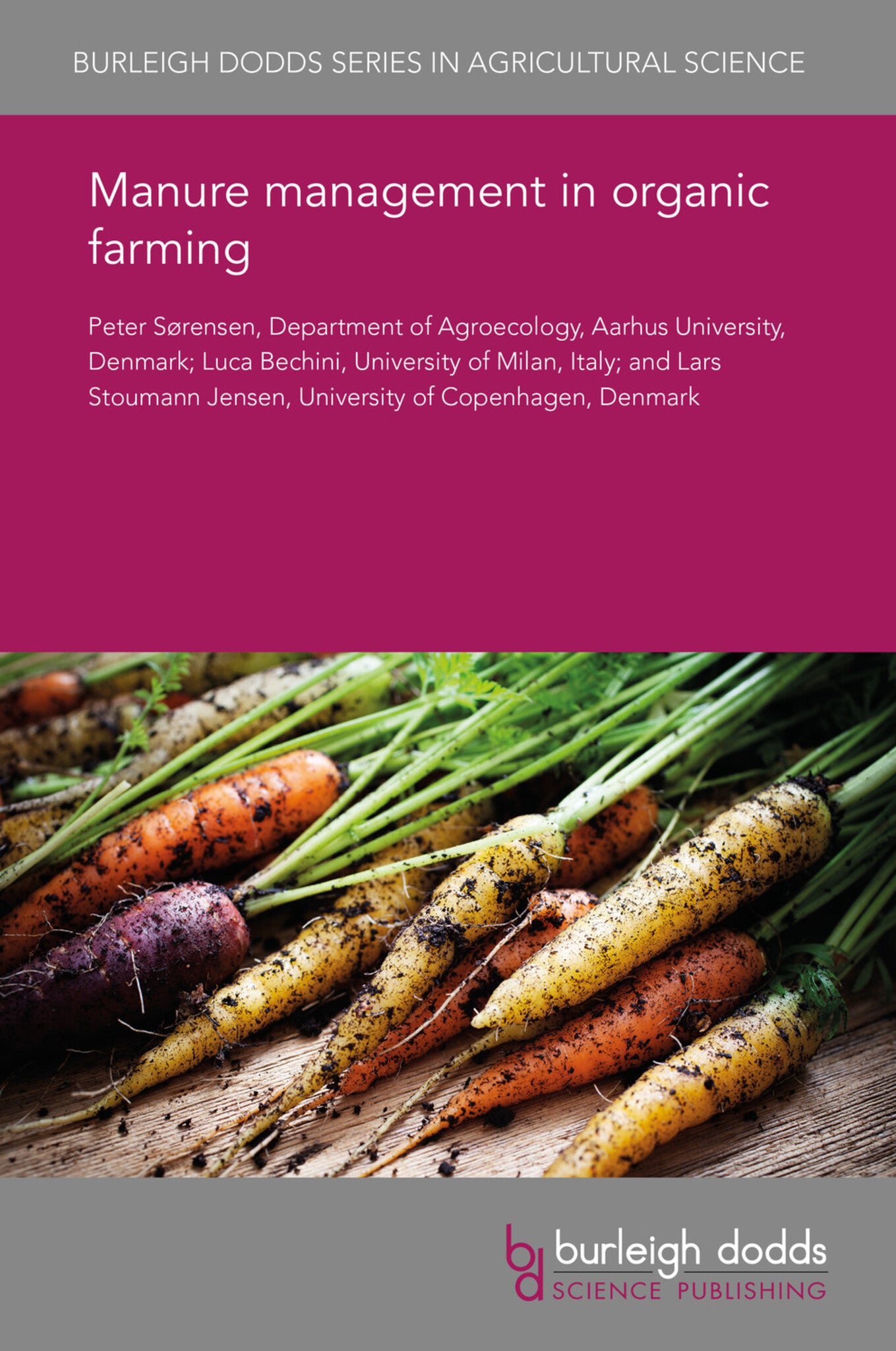We're sorry. An error has occurred
Please cancel or retry.
Manure management in organic farming
Regular price
£25.00
Sale price
£25.00
Regular price
£25.00
Unit price
/
per
Sale
Sold out
Re-stocking soon
Animal manure is the most important source of nutrients applied in most organic farming systems. Nitrogen (N) is often the most yield-limiting factor in non-leguminous crops, and thus lack of N may...
Read More

Some error occured while loading the Quick View. Please close the Quick View and try reloading the page.
Couldn't load pickup availability
- Format:
-
29 November 2018

Animal manure is the most important source of nutrients applied in most organic farming systems. Nitrogen (N) is often the most yield-limiting factor in non-leguminous crops, and thus lack of N may cause reduced yield and low protein content in many crops. In addition, N is the nutrient that is most easily lost, and these losses may have serious environmental impacts. This chapter reviews literature related to manure management and nutrient utilization, including ways to improve manure management in animal housing, during storage and after application in the field. The chapter considers anaerobic vs aerobic manure storage (composting), manure application methods and their effects on N utilization and soil carbon storage. The chapter explains how phosphorus and potassium applied in manure contribute to crop nutrient supply, especially when the soil availability is low, and also contribute to maintaining the soil fertility. Finally, the chapter looks ahead to future research trends in this area and provides detailed guidance on further reading on the subject.

Price: £25.00
Publisher: Burleigh Dodds Science Publishing
Imprint: Burleigh Dodds Science Publishing
Series: Burleigh Dodds Series in Agricultural Science
Publication Date:
29 November 2018
ISBN: 9781838796518
Format: eBook
BISACs:
TECHNOLOGY & ENGINEERING / Agriculture / Sustainable Agriculture, Organic farming, TECHNOLOGY & ENGINEERING / Agriculture / Agronomy / Crop Science, TECHNOLOGY & ENGINEERING / Agriculture / Agronomy / Soil Science, TECHNOLOGY & ENGINEERING / Agriculture / Organic, Sustainable agriculture, Agronomy and crop production

- 1 Introduction
- 2 Manure composition and properties in different livestock systems
- 3 Manure storage and treatment
- 4 Manure field application methods
- 5 Turnover and availability of manure N in soil
- 6 Utilization of P, K and S in manures
- 7 Plant-based manures (green manures)
- 8 Future trends and conclusion
- 9 Where to look for further information
- 10 References



